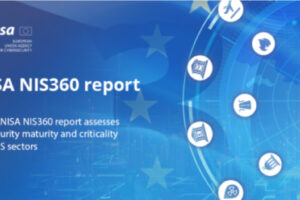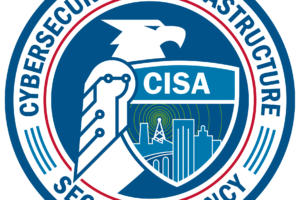Improving Red Teaming for Critical Infrastructure Protection: A Comprehensive Approach

By Aurora García, a journalist and consultant specializing in security and cybersecurity.


By Aurora García, a journalist and consultant specializing in security and cybersecurity.

The International Telecommunication Union (ITU) and the European Space Agency (ESA) have announced a collaborative effort to improve mitigation measures against harmful interference in satellite systems.
The joint initiative, reflecting United Nations objectives under the 2030 Agenda for Sustainable Development, aims to ensure the sustainable and efficient use of limited space-based communication resources.
Both organisations recognise growing complexities in managing finite spectrum and orbital resources. An agreement signed in Barcelona, Spain, formalises their plans for closer cooperation on key issues for global digital communications.
Under the agreement, ITU and ESA will work together on:
Space-based communication technologies are increasingly crucial for global connectivity, scientific research, and emergency response systems. At the same time, growing numbers of satellites and increasing risks of signal interference necessitate innovative, increasingly complex, and highly coordinated spectrum management solutions.
“Innovation and regulations are key to facilitate and preserve access to spectrum-orbit resources free from harmful interference,” said Mario Maniewicz, Director of ITU Radiocommunications Bureau. “This agreement is the first step towards a series of joint ESA-ITU efforts to ensure sustainability of space radio-communications systems.”
Preserving radio waves for all
ITU, as the UN specialised agency for information and communication technologies, has long been at the forefront of coordination among countries and regions on radio frequencies and satellite orbits worldwide. ITU Resolution 189 (Rev. Bucharest, 2022) emphasises the importance of transparency and confidence-building in outer space activities.
ESA, an intergovernmental organisation established in 1975, supports space research and technology development for peaceful and scientific purposes. Together, ITU and ESA aim to strengthen international efforts in satellite monitoring and interference mitigation, ensuring reliable and sustainable access to satellite communication services worldwide.
“Promoting the responsible use of spectrum and preserving it from interferences is key to ensure the viability of our operators and ultimately the service delivered to their customers,” said Laurent Jaffart, ESA’s Director of Connectivity and Secure Communications. “Together with ITU, we will promote the importance of ensuring the sustainability of this limited and valuable resource and will collaborate towards establishing good practices for its responsible use for the benefit of society and businesses.”
A step towards a sustainable digital future
By combining their expertise and resources, ITU and ESA could set a precedent for enhanced cooperation in the field of satellite communications.
“The shared commitment to responsible spectrum management and technological innovation marks a significant step toward a sustainable digital future for everyone,” said Mr Maniewicz. “This initiative underscores the importance of international collaboration in addressing the challenges and opportunities presented by space technologies.”
Maniewicz and Jaffart signed for their respective organisations at the Mobile World Congress (MWC2025 Barcelona).
As the demand for satellite-based services continues to grow, partnerships like this will help maintain the integrity and accessibility of global communication networks.
ITU and ESA have reaffirmed their dedication to a future where space technologies contribute positively to societal progress and sustainable development.

The IAEA’s International Nuclear Information System, a multi-million strong digital library, has been further strengthened with the addition of a modern repository platform.
Founded in 1970, the International Nuclear Information System (INIS) Repository hosts a massive library of nearly five million reports, books, scientific articles, conference papers and other knowledge products covering topics in nuclear science, reactor technology, materials science, medical applications, decommissioning, and all other areas the IAEA is involved in.
Using Invenio, an open-source platform developed by the European Organization for Nuclear Research (CERN) and tailoring it to its own needs the Agency was to make advancements in automation and accessibility as well as a major increase in capacity for handling new knowledge product entries in INIS. The new functionalities built with the platform allow INIS to connect with other repositories, facilitating the sharing of content and expanding the utility of all participating databases. INIS will be the first large repository to implement full-text search with Invenio – searching both the metadata and the text of a PDF.
“In today’s knowledge-based economy, information is considered one of the most valuable resources. It is critical for research, innovation, decision making, efficiency and productivity, knowledge sharing and continuous learning,” said Dibuleng Mohlakwana, Head of the IAEA’s Nuclear Information Section. “This new platform will help INIS expand its role as a global player in open science improving its capabilities as an information hub that facilitates the pursuit of nuclear science for peaceful purposes.”
INIS relies on contributions from more than 130 countries and 11 international organizations, with well over 100 000 new knowledge products being added each year. INIS staff supplement national contributions by harvesting information from some of the largest publishers, including Elsevier, Nature-Springer and the Institute of Physics.
The landscape of scientific publishing has changed greatly in the years since INIS was founded, with an increasing emphasis on open access. Publishers are providing more information and making it freely available, while repositories such as arXiv, the Directory of Open Access Journals, PubMed, etc. have made scientific knowledge more accessible than ever before.
“One of the great things about this platform is that whatever we develop here can be shared with all the other organizations. So not only are we sharing scientific information with the world, but we’re also sharing what we develop with Invenio,” said Astrit Ademaj, Nuclear Systems Support Analyst and Project Manager for the implementation of Invenio. INIS is the first large repository to implement full-text search – searching both the metadata and the text of a PDF.
Knowledge products entered into Invenio will be automatically categorized and tagged with descriptors. This had previously been done manually in what had been a highly time-consuming endeavour. This work will now primarily be handled by NADIA (Nuclear Artificial intelligence for Document Indexing and Analysis), an AI tool developed by the IAEA. Previously, contributors sent their entries using a unique language and format. Now a user-friendly form is provided, so specialized knowledge and training are no longer necessary.
"Many of the items available on INIS are quite fascinating," said Brian Bales, INIS Coordinator. “One of the most popular recent additions is the Prospective Study Bluebook on Nuclear Energy to Support Low Carbon – a cooperative effort between nuclear companies in China and France to address the challenges of climate change. Over the last 5 years, we’ve added over 600 000 such knowledge products.”

The State of California adopted the 2024 International Wildland-Urban Interface Code® (IWUIC®) as the basis for Title 24, Part 7, 2025 California Wildland-Urban Interface Code to address escalating wildfire risks, enhance fire resilience with science-based standards, and set the benchmark for safer, more sustainable communities in fire-prone areas.
California’s adoption of the 2024 IWUIC is the result of a multi-year collaboration between the CAL FIRE Office of the State Fire Marshal, the California Fire Prevention Officers (CAL FPOs), California Building Officials (CALBO), the International Code Council (ICC), the California Building Industry Association (CBIA), and wildfire stakeholders culminating with rulemaking by the California Building Standards Commission (CBSC).
“Today marks a milestone that represents the hard work of many to update and modernize Wildland-Urban Interface building codes,” said California State Fire Marshal Daniel Berlant. “While these aren’t necessarily new requirements, it’s a reorganization of many sections into a singular code with the goal of making it easier for local officials to ensure that new homes and buildings built in wildfire-prone areas have an increased chance of surviving a wildfire.”
“With the help of expert volunteers, CAL FIRE’s Office of the State Fire Marshal has shifted the basis of Title-24’s Wildland Urban Interface standards to a nationally developed model code. The IWUIC is developed though the collaborative efforts of the foremost experts in the field of wildland construction safety from across our country. By utilizing this model code, California will benefit from the continual code development cycle that the Code Council uses to ensure that all its codes are the best in the world,” said Code Council Immediate Past President Stuart D. Tom, P.E., CBO, FIAE – Superintendent of Building and Fire, Pasadena, California.
“The adoption of the California Wildland-Urban Interface Code as Part 7 of Title 24 marks a significant milestone in protecting communities from the devastating impacts of wildfires. This accomplishment highlights the dedication and collaboration of the CAL FPOs and the California Office of the State Fire Marshal in adapting the IWUIC to address California’s unique challenges. Our members remain dedicated in their commitment to enhancing fire prevention, improving life safety measures and developing codes that safeguard our homes and neighborhoods,” said Tim Spears, Fire Marshal, CAL FPOs North Division President and Joe Morelli, Fire Marshal, CAL FPOs South Division President.
This decision comes after careful consideration and is a testament to the state’s commitment to upholding the highest standards in wildfire resiliency and mitigation.
“There has never been a more essential time for collaboration in the name of public safety, and the newly approved use of the Code Council’s IWUIC is a testament to this shared effort. California’s building, fire and code professionals came together to work in concert with the California State Fire Marshal to usher in a new era of fire-safe development standards and defensible space provisions that will enhance fire safety in the built environment. With the definitive actions of the Building Standards Commission, CALBO looks forward to enforcing the IWUIC and its model provisions into the future,” said Jeff Janes, President of California Building Officials.
“While CBIA was initially concerned with this effort, we are now pleased to strongly support the California State Fire Marshal’s plan to use the Code Council’s IWUIC as the basis for California’s new stand-alone Wildland-Urban Interface fire safety code. This new document will combine three fire safety measures (building standards, defensible space provisions and fire-safe development standards) and publish them all under one cover,” said Christopher E. Ochoa, Esq., CBIA Senior Counsel – Codes, Regulatory and Legislative Affairs.

The NIST National Cybersecurity Center of Excellence (NCCoE) along with the SEMI Semiconductor Manufacturing Cybersecurity Consortium has released Draft NIST Internal Report (NIST IR) 8546, Cybersecurity framework (CSF) 2.0 Semiconductor Manufacturing Community Profile for public comment.
This draft Profile provides a voluntary, risk-based approach for managing cybersecurity activities and reducing cyber risk to semiconductor manufacturing systems. The semiconductor manufacturing environment is a complex ecosystem of device makers, equipment OEMs, suppliers and solution providers. This Profile focuses on desired cybersecurity outcomes and can be used as a guideline to improve the current cybersecurity posture of the semiconductor manufacturing ecosystem.
“NIST, in collaboration with industry leaders and government agencies, has developed and is releasing a comprehensive Framework designed to safeguard semiconductor manufacturing from emerging threats and vulnerabilities,” said Sanjay Rekhi, group leader of the Security Components and Mechanisms Group at NIST. “This initiative is part of a broader, multi-year effort to strengthen the security of critical infrastructure, with a particular focus on the security of semiconductors and their supply chain.”




